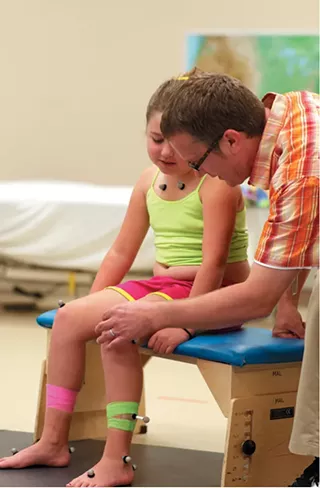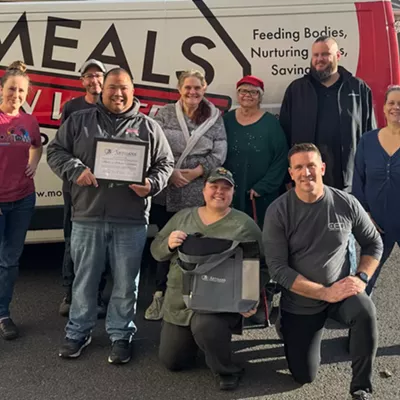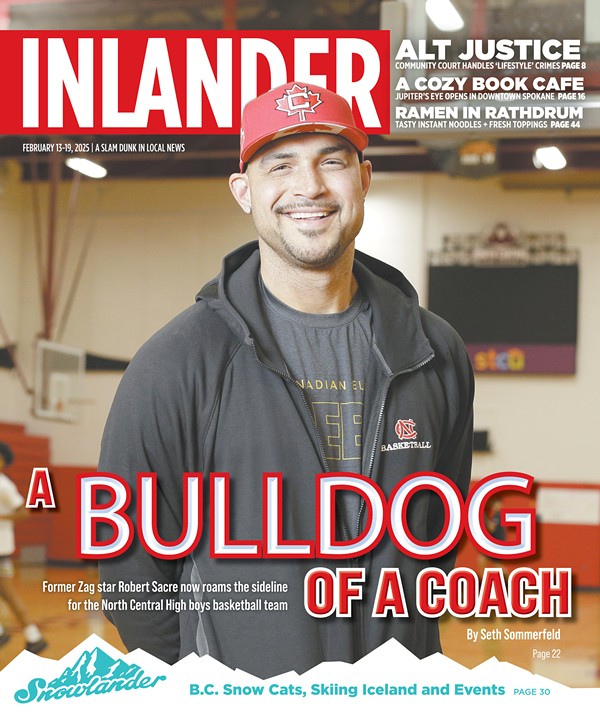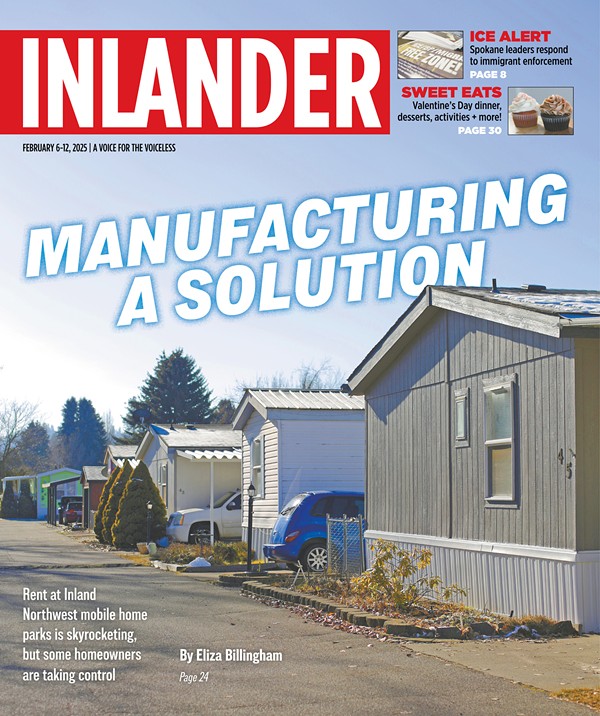Little red wagons park next to heart monitors in the long hallways of the hospital. Board games, dolls and toy trucks litter the examination rooms. Brightly painted flowers blossom across the walls of the Emergency Department.
Everything in the Sacred Heart Children's Hospital custom-fits kids — tiny chairs, short countertops, colorful decorations. That same spirit carries into the medical treatment.
Dr. Keith Georgeson, medical director for the hospital, says doctors have come to realize children are not just small adults. They have unique health risks, disorders, dosages, social needs and anxieties.
"Pediatricians wanted to have the same quality of health care for kids in this region as they have for adults," he says. "The only way to do that is to develop specialization."
National trends show more and more hospitals moving toward separate and specialized care for children. Georgeson says Spokane pediatricians have likewise built a strong network of specialists, care services and treatment programs.
As the Children's Hospital prepares to celebrate 10 years since its opening, other Spokane medical facilities continue to offer new pediatric services. Technology has driven increased innovation, spurring new treatments and connecting physicians with new resources.
Shriners Hospital for Children has recently launched a new urgent care fracture program and plans a future expansion. Deaconess Medical Center has also added new child medicine services.
"We really are working hard to provide the highest quality of health care to our kids," Georgeson says.
With the expansion of local services, Spokane has become a regional destination for children's health care. Families come from all over the state for specialized care, as well as parts of Idaho, Oregon, Montana and beyond.
Children's Hospital spokeswoman Danita Petek says the hospital treated more than 37,000 children in 2012. The nearby Shriners Hospital, which specializes in orthopedic (musculoskeletal) medicine, treats another 800 children each month.
"We serve about a 300-mile region around Spokane, it's 300 miles in each direction," Petek says. "There's about 1.7 million people in that catchment area. … There's a huge need."
Doctors and surgeons at both hospitals have received extra certifications in pediatric medicine. The medical staffs train to provide unique children's care, diagnose distinct complications and interact with young kids.
"Everyone is pediatric-trained and loves kids," Shriners spokeswoman Kristin Monasmith says. "That's what they do. That's what they love."
Some programs work with children to educate them about their illnesses and their treatments. Georgeson says one innovative new program seeks to eliminate pain from the treatment process, using topical anesthetics and other techniques to reduce fear of needles.
"We're developing all these strategies," he says. "It's not perfect, but it's a lot better than it used to be."
Health care providers also try to combine treatment with entertainment. Recreation rooms offer craft tables, games and toys. Rooms for teenagers have videogames and DVDs. Patients can enjoy flat-screen TVs, computers or iPads.
"We're trying to make their lives as normal as we can, so they can enjoy their time here," Petek says. "It's just a very fun atmosphere."
While just four years ago the Shriners Hospital faced potential closure over funding issues, interim administrator Craig Patchin says the hospital has shifted back into "expansion mode."
"It's very healthy," he says.
New patient referrals jumped 16 percent from 2011 to 2012. The hospital, which offers treatment regardless of ability to pay, recently hired a new surgeon and in April opened an urgent care service for treating fractures.
Monasmith says the new urgent care program allows doctors to make overnight referrals, getting children into surgery the following day to repair fractures.
"It's been really successful," she says.
Shriners Hospital also just completed design work for an expansion costing more than $15 million, which would reconfigure its top floor to better accommodate its outpatient procedure rooms. The renovations would add new administrative space and parking on the back of the building.
Patchin says funding for the project was recently delayed, but he hopes to be able to move forward sometime in the next year.
Deaconess Medical Center reopened its pediatrics unit in late 2010. With so many babies born in the Deaconess maternity unit, spokeswoman Kaitlyn Aliota says in an email the hospital wanted new parents to be able to bring their children back for follow-up care.
"Our pediatrics volume has been growing since then," she says. "We made a significant investment in reopening this unit, designing it for the comfort of children and their families and furnishing it with the specialized medical equipment and technology needed to care for pediatric patients."
Georgeson says Spokane pediatricians also often work with rural doctors or other hospitals to collaborate on patient care. In addition, local hospitals also run extensive outreach programs to provide research opportunities and consultation services throughout the region.
"We are trying to export as much of the expertise as we can," he says.
Home Away From Home
When children from out of town seek lengthy treatment at Spokane hospitals, it can create a difficult situation for their families. "We have to take care of the families because children don't come with just a person," Petek stresses.
The Spokane Ronald McDonald House provides free accommodations for families who live more than 40 miles from the hospital. Spokeswoman Colleen Fox says the 22 guest rooms serve about 700 families a year, and there's often a waiting list for space.
"We're the only resource in the area where families can stay for free," she says.
The organization hopes to expand its services in the next couple of years.
Ronald McDonald House also maintains "family rooms" inside the Sacred Heart Children's Hospital with sleep rooms, laundry facilities and other resources.
"We really try to provide them with a second home," Fox says.

















